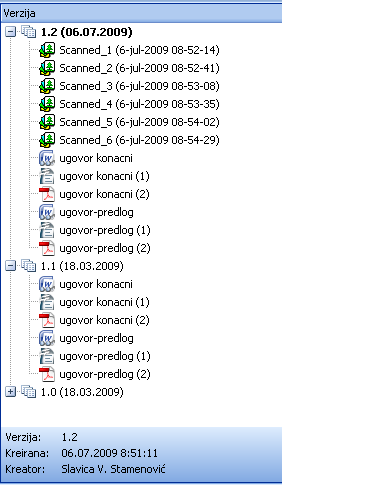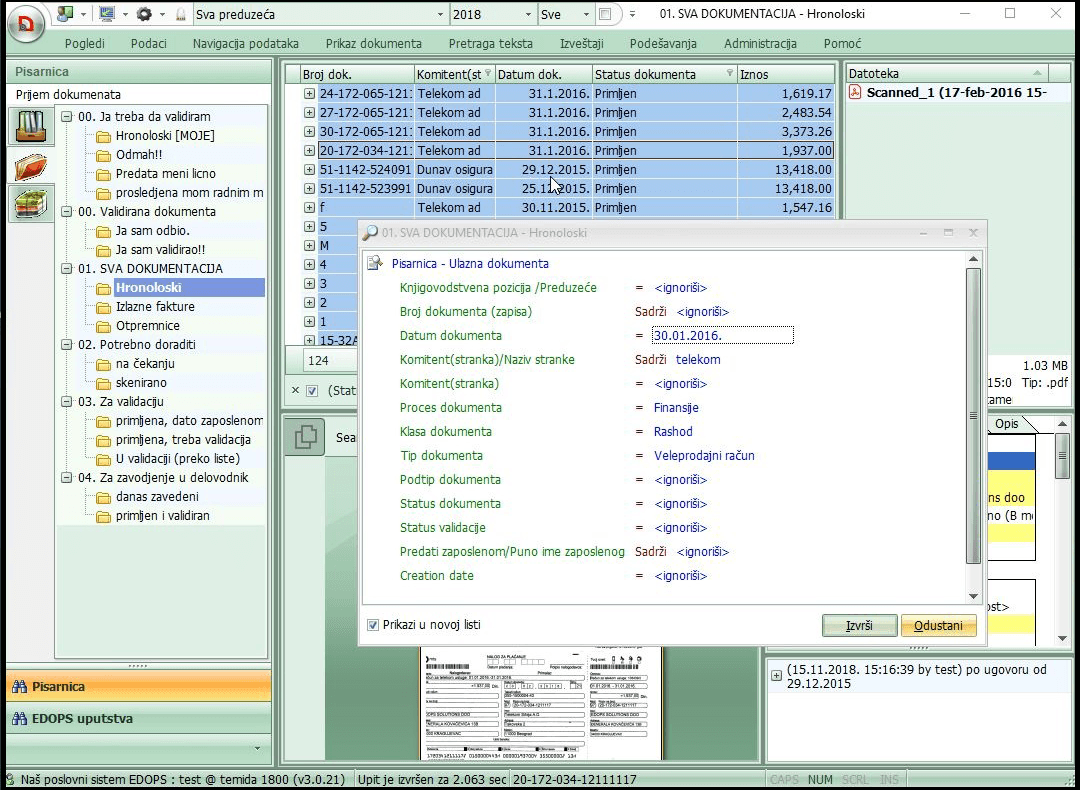E-Office Software
Business documentation is of great importance and this is clear, but when it comes to storing and storing those documents, as well as keeping records and monitoring the status of each, many companies put that segment of the business aside and rely on physical storage, storage and wasting time searching and sharing documentation. In addition to the time spent, businesses spend extra money on paper printing, salaries of employees who perform routine operations, overtime due to lack of time to process paperwork, the cost of sending a paper document (mail), the cost of exchanging data (daily telephone calls).
In practice, businesses are often unaware of these “small” costs and do not pay too much attention to them. However, if the above costs could be presented numerically or graphically for each month of the business, we believe that awareness of the need for a quality software solution would increase.
What does research show?
In cooperation with our users, we monitored the work and performance of the company before and after the introduction of the software solution and came up with surprising results. The electronic office software solution reduced the cost of performing routine operations by as much as 10 times.
If we are not aware of the existence of the problem, we will not look for a solution.
Problems keeping paper documents
Problems are identified when need to find a specific document, that is, the exact information on that document. Other problems with storing or storing paper documents are:

Initiation the electronic signature requires electronic archive – Why?
With the introduction of electronic signature, an additional problem arose: “How to properly archive, store and manage ie. to use an electronically signed document? ”Archiving such a document without the use of a software solution (Electronic Archives) can invalidate the document, which, in rare situations, happens by deliberate modification. Businesses that do not use the Electronic Archive keep all documentation (including electronically signed documentation) on their computer. However, there is a prescribed rule that a document should not be altered after an electronic signature, and in the event of any changes (even adding a point or space), the electronic signature will cease to be valid and thus the document is no longer valid. This documentation is created electronically, most often in Word, so opening the document can change the content.
Another type of risk that threatens the validity of a document is computer viruses. The document on the computer in the folder is not protected and can be affected by any virus. This is the most common occurrence that led many businesses to embark on the Electronic Archive implementation adventure.
An electronic archive, for the purpose of folding away from a folder on a computer, allows you to convert a document to a record. With this procedure, the document becomes encrypted ie. locked and no changes of any kind are possible. After declaring a document a record, it can only be seen and printed, if necessary. Only persons, ie employees who have been granted the right to view and print a particular document, have the right of access to the contents of the document. This is how the Electronic Archive works, not only for the electronically signed document but for all other company documentation.
The question arises: ''How to solve all the problems said?''
Unique software solution – Electronic office
The solution has been around for many years and is very simple, which is to introduce an electronic office. Within the EDOPS Document Office, there is a special module designed to manage the entire enterprise documentation called Electronic Office – emPIS. Within this module, it is possible to:
Electronic archives new documentation
Manage documentation effectively
Keep it - store it
How does the electronic office operate?
The solution has been around for many years and is very simple, which is to introduce an electronic office. Within the EDOPS Document Office, there is a special module designed to manage the entire enterprise documentation called Electronic Office – emPIS.Inside this module it is possible to:
Short description of operations and functionality of the Electronic office
The program pays for itself. How?
If a business chooses to improve its business by implementing EDOPS Document Office and its emPIS module, it can pay off the entire investment in a very short period. Profitability is realized through:
Additional savings can be made by digitizing existing documents that were generated during the business and before the introduction of the electronic archive. From that moment, working with those documents is electronic.
Since the reasons for introducing paperless business into everyday work are evidently irrefutable, the question arises as to the security of that documentation.
How many documents are stored in the Electronic office?
Document security in an Electronic office software is reflected in:
Therefore, we can safely say that emPIS is the best possible solution for archiving and managing documentation.
The electronic office (emPIS) has been put into practice in many companies for many years. Over the years, this module has been redesigned to meet customer needs. Depending on the user’s area of operation, specialized work masks may be fitted. (bookkeeping agencies, law firms, manufacturing companies, public administrations, etc.).
Why and how does the companies have ”brakes” in implementing of new software?
Businesses often have a fear of introducing new technologies into their businesses. Fear comes from:
Companies have lost confidence in this approach from manufacturers. That is why our team strives to take full advantage of the benefits and capabilities of each function of the software solutions in a joint way. Then the program really starts working for the business by saving time in performing routine operations, and documentation is always and immediately available.
Why choose EDOPS?
EDOPS Solution is one of the first IT companies that developed the Electronic Writing Module. The emPIS module has been in use for over a decade, confirming the practical applicability of the work as well as hundreds of satisfied users.
What do our long-term customers say?
The EDOPS team provides full support to its customers for years after implementing software solutions. Satisfied clients are our biggest motivation and a miss for all future projects. You can read more about the problems encountered by our users, as well as how they were solved here.







